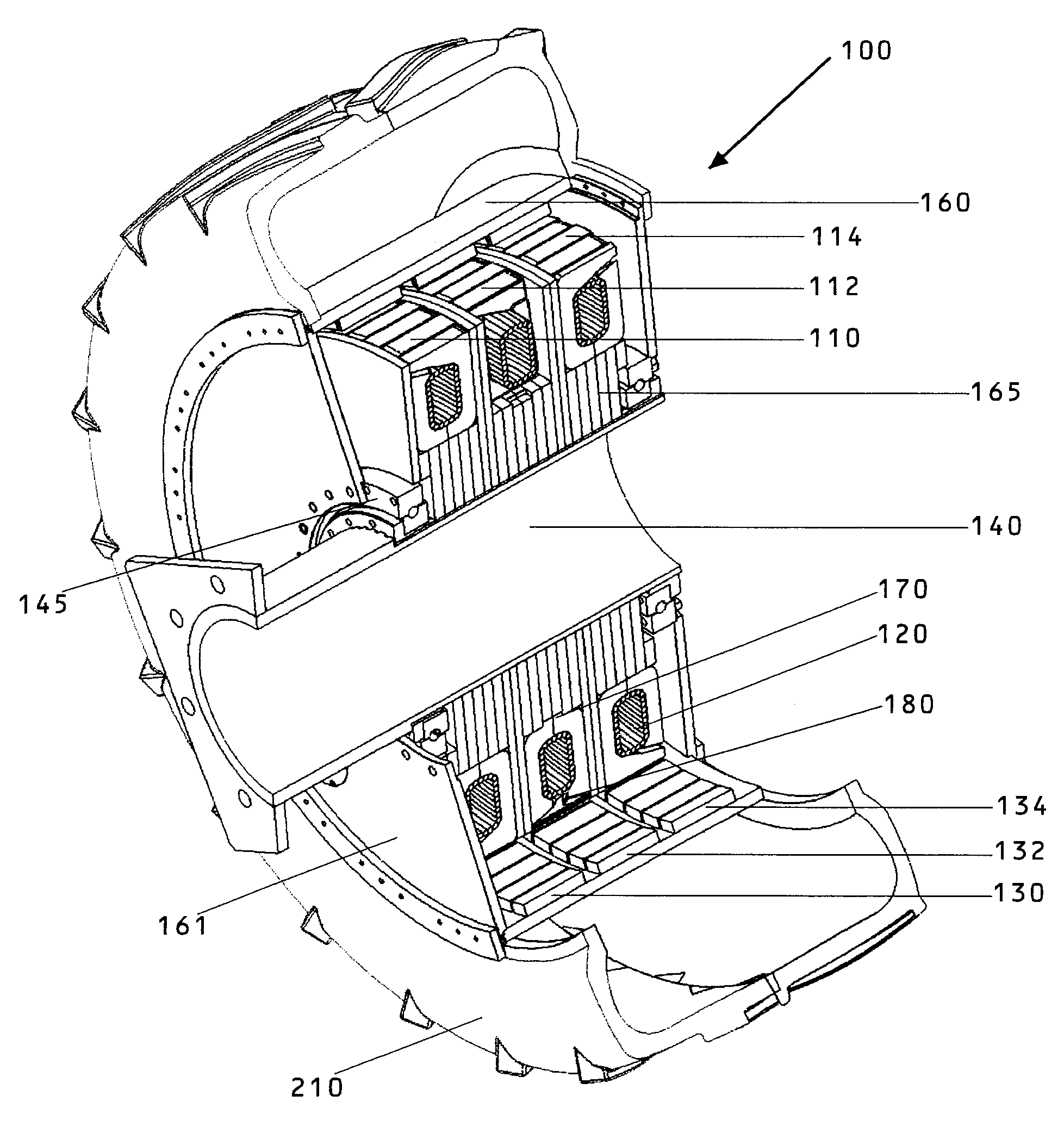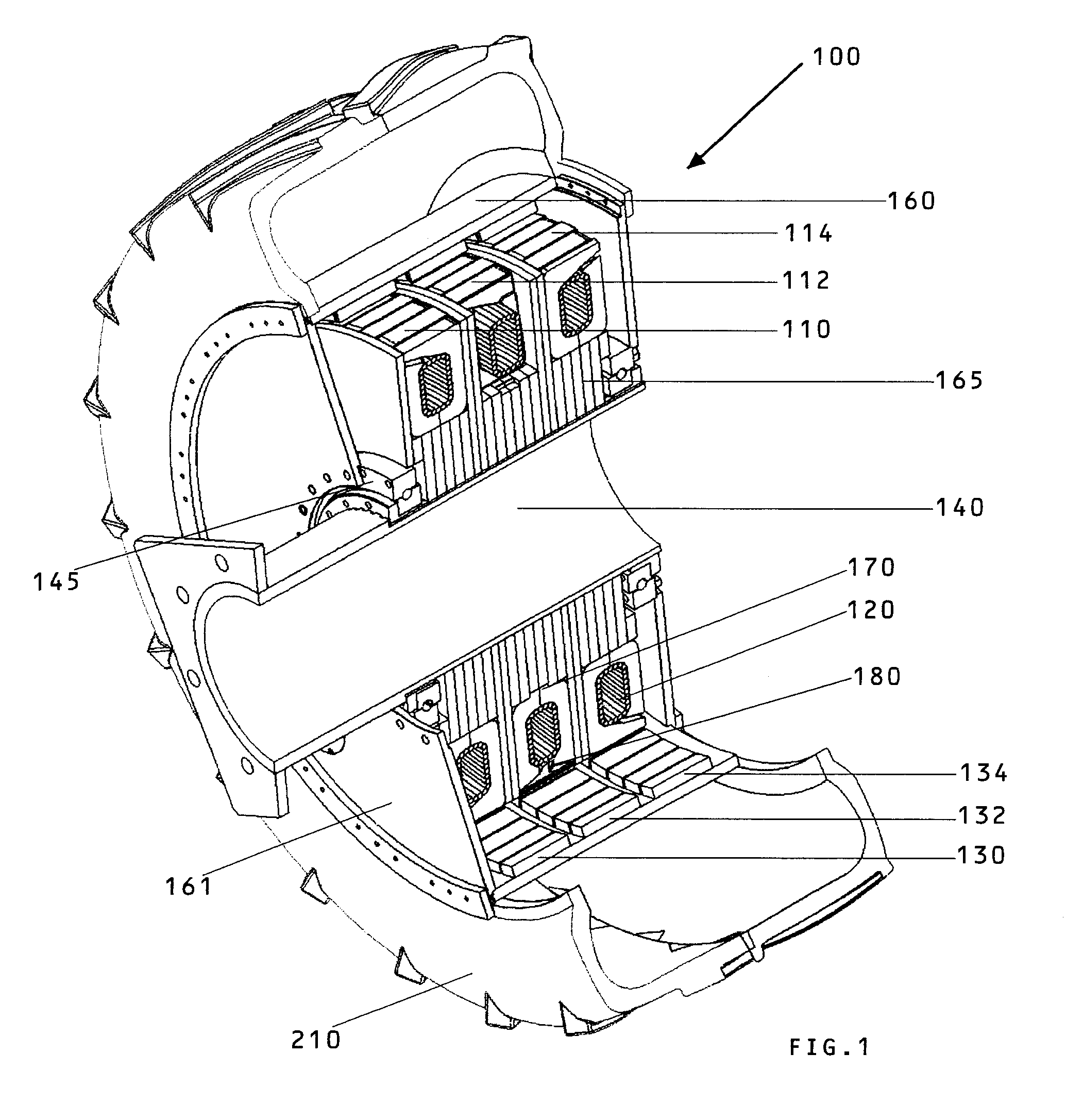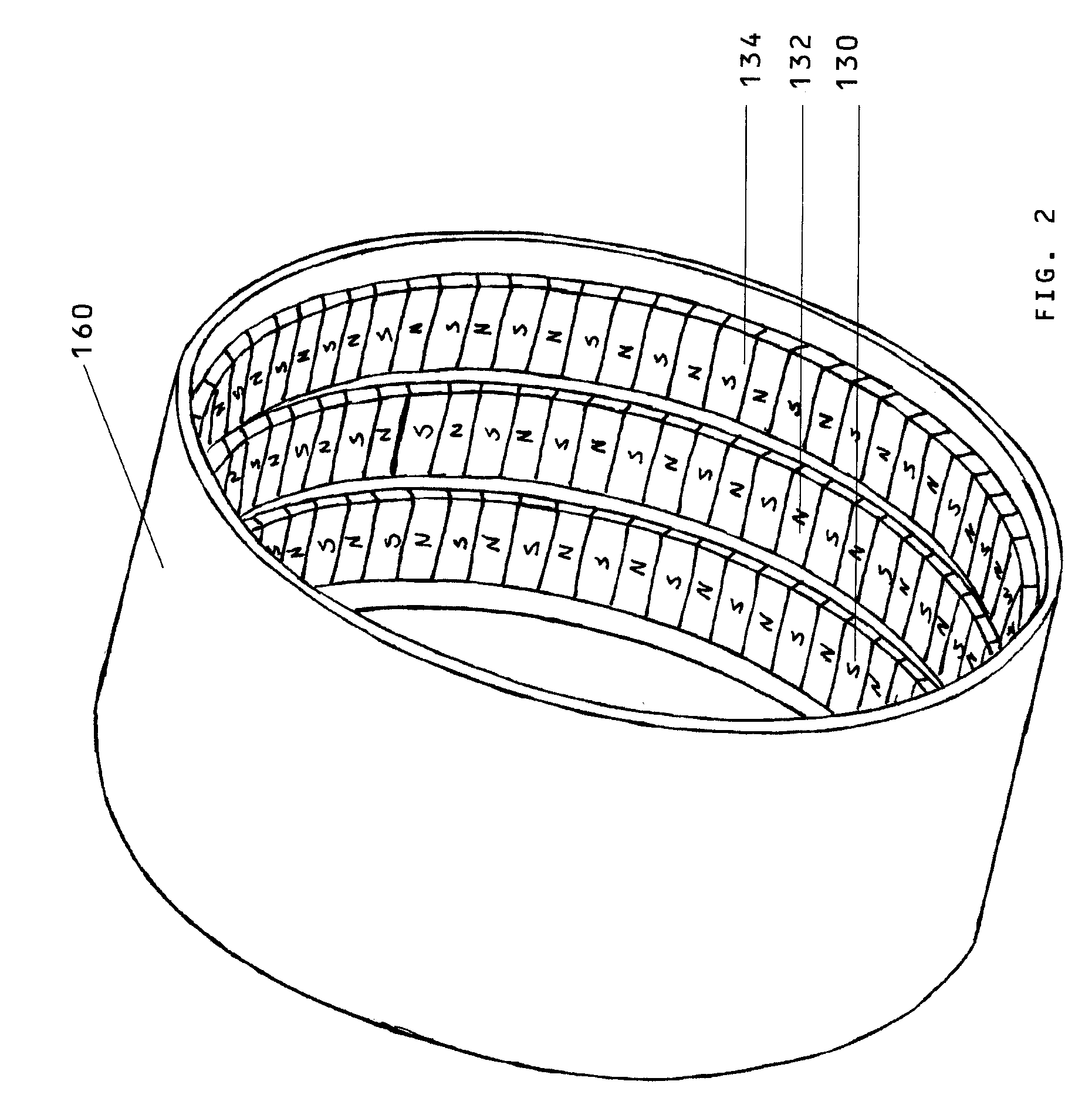Method of fabricating a magnetic flux channel for a transverse wound motor
a transverse wound and magnetic flux technology, applied in the direction of magnetic bodies, manufacturing stator/rotor bodies, magnetic circuit shapes/forms/construction, etc., can solve the problems of only blocking one plane of eddy current, reducing the maximum amount of torque produced, and adding silicon actually worsening the magnetic conductivity. , to achieve the effect of reducing eddy current, increasing overall efficiency, and reducing eddy curren
- Summary
- Abstract
- Description
- Claims
- Application Information
AI Technical Summary
Benefits of technology
Problems solved by technology
Method used
Image
Examples
Embodiment Construction
[0052]Before explaining the disclosed embodiments of the present invention in detail it is to be understood that the invention is not limited in its application to the details of the particular arrangements shown since the invention is capable of other embodiments. Also, the terminology used herein is for the purpose of description and not of limitation.
[0053]The following is a list of the reference numbers used in the drawings and the detailed specification to identify components:
[0054]
100motor106bundle of insulated wires104mold and stator housing107bundle of insulated iron tape108matrix of powder or binder162mounting shaft hole110pole pieces, phase “A”165hub112pole pieces, phase “B”170locating key114pole pieces, phase “C”172north parallel pole piece120transverse wire winding174south parallel pole piece130row of magnets, Phase “A”175hollow core132row of magnets, Phase “B”177air gap134row of magnets, Phase “C”200wheel motor140mounting shaft210tire145bearing220location ridge150Magnet...
PUM
| Property | Measurement | Unit |
|---|---|---|
| diameter | aaaaa | aaaaa |
| size | aaaaa | aaaaa |
| size | aaaaa | aaaaa |
Abstract
Description
Claims
Application Information
 Login to View More
Login to View More - R&D
- Intellectual Property
- Life Sciences
- Materials
- Tech Scout
- Unparalleled Data Quality
- Higher Quality Content
- 60% Fewer Hallucinations
Browse by: Latest US Patents, China's latest patents, Technical Efficacy Thesaurus, Application Domain, Technology Topic, Popular Technical Reports.
© 2025 PatSnap. All rights reserved.Legal|Privacy policy|Modern Slavery Act Transparency Statement|Sitemap|About US| Contact US: help@patsnap.com



